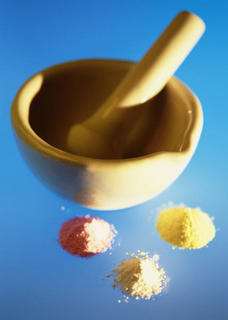 Latin names:
Latin names: Bursera fagaroides, Bursera ororata
The word “copal” derives from the Spanish word “copalli” which means incense. Copal is a crystallized resin (the solidified portions of tree or plant sap). Copal is not an herb in the typical sense. When burned, copal is very fragrant and aromatic. Copal comes from various species of the Bursera species of trees found in Mexico and South America. The three varieties of copal are black, white, and gold in color, each with its own subtle, sweet scent. Copal resin has been used and burned atop Aztec and Mayan pyramids by Meso-American Indians (the Mayan and Aztec peoples) for many centuries for spiritual and ritual purposes.
Please keep in mind that you should only burn a small portion of the copal resin at a time because resins tend to produce a lot of thick smoke.
Soaking copal in a mixture of water and ethyl alcohol will produce an aromatic tincture; the ethyl alcohol helps in the extraction of copal’s active components while concentrating and preserving them. Copal can be ground into a fine powder, with a mortar and pestle, then sprinkled over a charcoal disc to be used as incense.
Spiritual Properties:
Copal can be can used for consecration and anointing of pentacles, athames, wands, etc.
Like most resins, copal is burned or smoldered as incense during spellwork and/or rituals and needs to be burned on charcoal tablets or discs along with some Japanese Ash (if you choose) for an aromatic experience. Copal can be used during protection, divination, cleansing/purification, banishment, exorcism, hex-breaking, love spells, meditation, and other spiritual ceremonies. It can be used to ward off negative energy by placing small pieces of copal in with your crystals in a special place of your choice. This is wonderful resin to work with and for creating a mellow and magickal atmosphere to work in.
Copal’s Correspondences:
Planet: Sun
Elemental: Fire
Gender: Masculine
Power: Purification, Love
Medicinal Properties:
For many centuries, traditional Indian, Meso-American, and Native American healers have known about, used, and taken advantage of the anti-inflammatory properties of the tree bark's gummy resin known as salai guggal. Modern day herbal preparations are made from a purified extract of salai guggal, packaged in a pill or cream form, then used to reduce inflammation associated with osteoarthritis and rheumatoid arthritis.
Frankincense makes for a fine substitution if you are unable to find any copal. Frankincense derives from the Boswellia serrata species of tree also known as Boswellin or Indian Frankincense that grow in the dry hills of India.
Copal Deposits:
Africa (North, East and West) - Borneo, Congo, Madagascar, Kenya, Tanzania, Zanzibar.
Asia - Damar.
Australia - Allendale Victoria.
Baltic.
East India.
Indonesia.
Israel.
Japan - Mizunami.
Malaya.
Philippines.
South America - Brazil, Colombia, Sierra Leone and the Congo.
Sumatra.
__________________________________________________
Copyright © 2004 Kheti Metaphysical Institute & Dr. K. Re